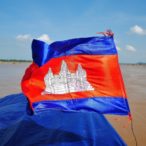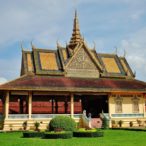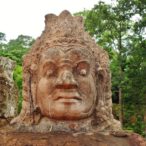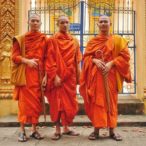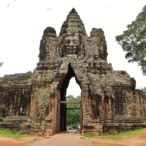Cambodia
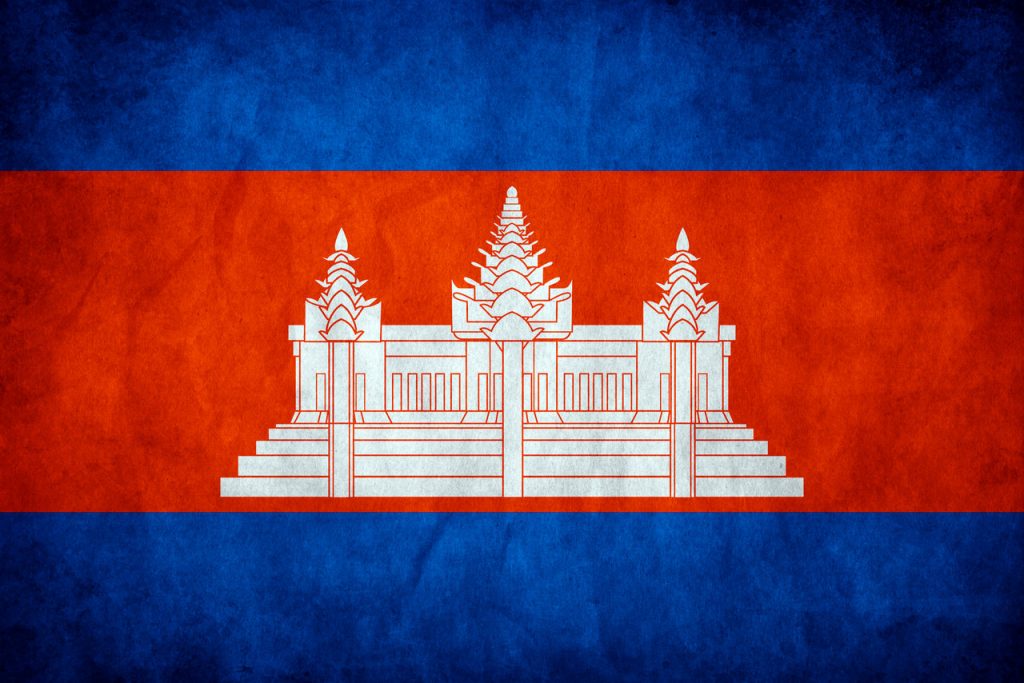
Official name: Kingdom of Cambodia
Population: 16 000 000
Area: 181 035 km²
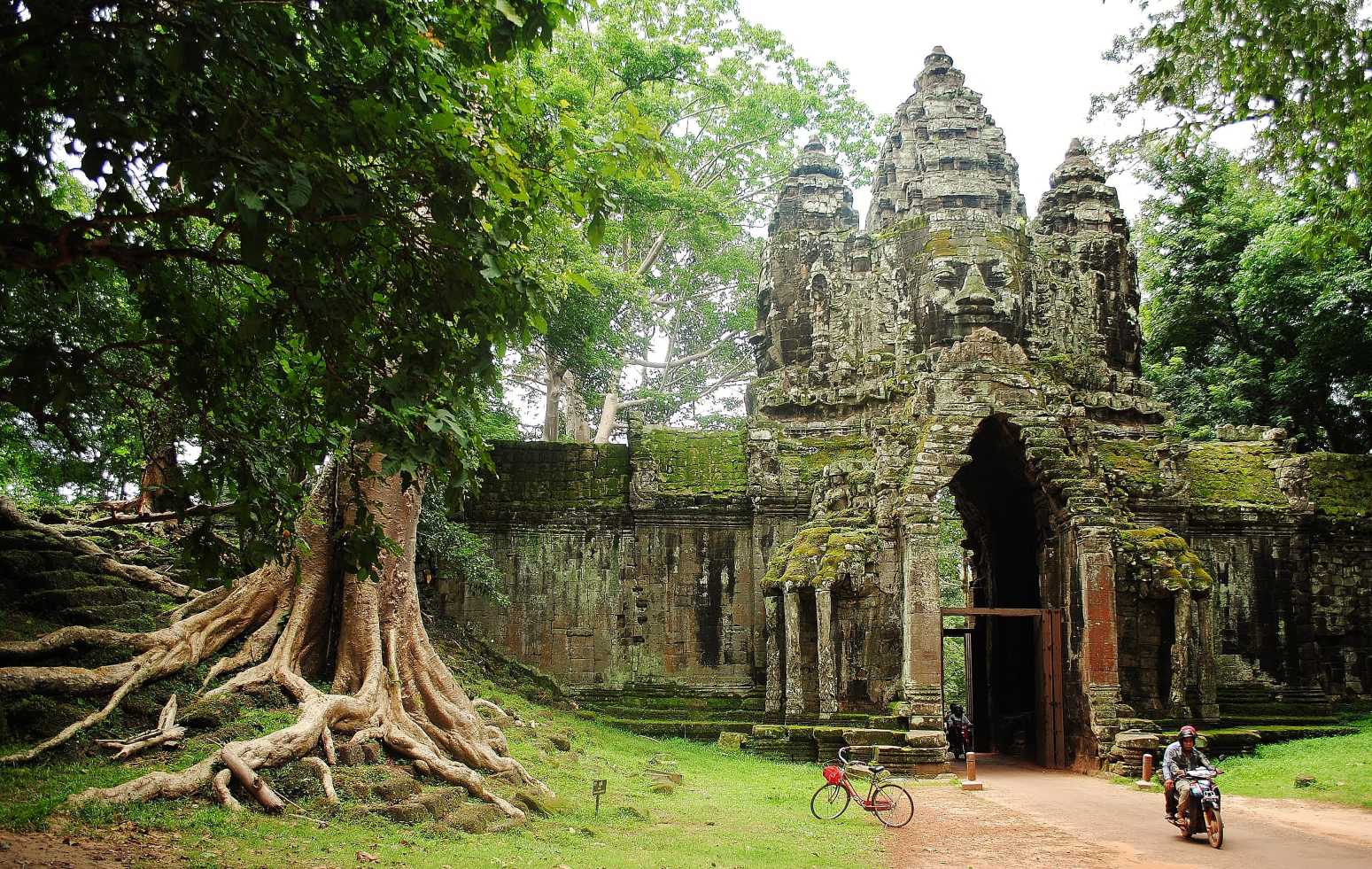
Gallery
Tourist attractions of Cambodia, Cambodia – the present times, history of Cambodia.
Tourist attractions of Cambodia
From the tourism point of view, clearly the main attraction of Cambodia is the complex of the Angor Wat temples. Angkor is one of the largest and the most famous sight of the world, which is a proud remnant of the Khmer Empire. I also recommend the Killing Fields, being the tragic reminder of the Khmer Rouge regime, but also the natural beauty in the form of tropical islands and white sands. It is easy to forget about the sad history over there and just enjoy exotic nature of this beautiful country. Definitely to the advantages I also include all the Buddhist temples and even the culture of Cambodia, which is also based on always nice Buddhism. It`s been also calculated that Cambodia has almost 4500 Buddhist temples, what means that tourist have a lot to chose from. To me personally, it was a great attraction to see the rural life of Cambodia, and people working on rice fields, and using primitive tools and buffaloes. Another great thing which can`t be missed are elephants at work.
It is important to realize that Cambodia is not only about Angkor Wat, and apart from the temples of Angkor it also does have a lot other things to offer. A lot of tourists make a great mistake by coming to Cambodia only for three days just to see Angkor Wat, and then they leave without having a clue about this country. I think that one month of travelling around Cambodia is sufficient to complete the adventure, see the caves, rice fields, rural life, the most interesting temples, and to seat under banana tree and drink a cold mango juice. Cambodia is also a home to many species of exotic animals: including 536 bird species, 240 reptile species, 212 mammal species, and thousands of fish species.
To the most attractive tourist places I include: Siem Reap and Angor Wat, Sihanouk Ville, Kampot i Kep, Phnom Penh, and many exotic islands in the south. I also have to admit that Cambodia is a regional leader when it comes to souvenirs, and the best places to buy are Siem Reap and Angkor Wat. There is no end to beautiful paintings, sculptures, and presents for our ladies. Food and massages are also very good and I warmly recommend.
Cambodia is just another quiet country in the region, where time has stopped, and we can drink its pleasures in peace .
Cambodia – the present times
Economy:
The Kingdom of Cambodia is a very interesting and worth visiting country, but unfortunately it is also one of the poorest in Southeast Asia and around the world. Economic growth takes place but comparing to the other countries in the region it is still very small. The national income of Cambodia is based mainly on growing rice, fishing, logging of priceless trees, garments and rubber. Although textile industry is the one which brings the biggest profits, the fastest growing industry of Cambodia is the tourism industry. Of course this fact shouldn’t surprise anyone, especially that Cambodia is a home to the worldwide phenomenon – the temples of Angor Wat. By talking about the tourism industry I`m not only talking about the number of tourists visiting Cambodia, but also the souvenir trade. In Cambodia they make especially national scarves, sculptures, paintings, soaps, and many more interesting and beautiful things for tourists, who provide income to more and more Cambodians. The demand is so big that Cambodia has import souvenirs from the neighbouring countries. Until today the biggest foreign investor in Cambodia is China.
Another huge problem is a poverty, because as high as 40% of Cambodian population lives below the poverty level. This means that whole families live in streets, begging, injecting themselves heroine and falling into prostitution.
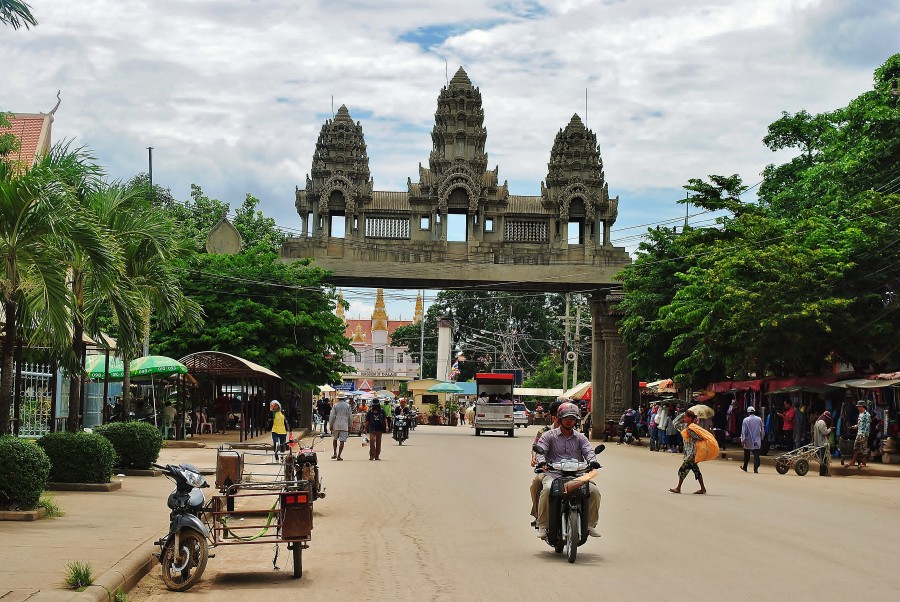
The border at Poipet between Laos and Cambodia. As we can see, the Angkor temples form the basis of the Cambodian national identity.
Education:
Education of Cambodia does not stand on a high level, as only 74% of people can read and write.
Health:
Sad data show that Cambodia also provides prostitutes for the neigbouring Thailand, and especially certain regions (like the border town of Poipet) are a breeding ground for AIDS. Cambodia is one of the poorest countries in the world, and high risk when it comes HIV. Despite government efforts, even though the number of HIV infected has dropped, it is still about 200.000. Infant mortality is about 50 per 1000 births, and 22% of all children under the age of 5 does will never get to celebrate the 6th birthday.
Despite the health level has improved slightly over the last 10 years, it is still tragic, as the average life expectancy is 60-65 years. There are also many other disease in Cambodia, like for example: malaria, hepatitis and water bourne disease.
Culture/Religion:
Cambodia is dominated by Buddhism Theravada (95%), which has a big reflection in the culture of Cambodia and is also a part of tourist attraction for western tourists. Cambodia gives an impression that it lives and exists only for the temples of Angor Wat. 90% of Cambodian population are of Khmer roots, and the majority are women.
Media:
There is no press freedom in Cambodia and journalists are persecuted for trying to write what they really think. In the press freedom index Cambodia was sequentially at 141, 126 and 117 place, what shows a slight improvement, but this situation still has nothing to do with freedom.
Environmental problems:
From the side of tourism, health and natural beauty I am personally most worried about the primary forests of Cambodia which disappear in an extremely fast pace. From the 70% of forests in 1969, today only 3% has survived, because lawlessness, extreme greed, corruption and prostitution feeding aids, are next to Angkor Wat the specialties of Cambodia. With shrinking forests, also shrink the natural animal habitats.
Summary:
Cambodia is a constitutional monarchy with a king as the head of the state. The government is ruled by the prime minister Hun Sen, who got to power with the Khmer Rouge and has been in the job for 25 years. It only proves that Cambodia apart from beautiful art, culture, nature and landscapes, is also a country of great corruption, poverty and outbreaks of deadly disease.

Angkor Wat. Cambodia.
History of Cambodia
Cambodians are descendants of the great Khmer warrior civilization, who about 1200 years ago created a big empire. Today the vast and richly carved temples are the greatest wealth of Cambodia and have no equal in the world. The Khmer empire occupied the territories of today’s Cambodia, Vietnam, Malaysia, Laos, Thailand and Burma. Unfortunately the later history of Cambodia is very sad, taken over by colonialism, civil wars and mass murders of humanity. France took absolute control over Cambodia in 1863, although they were driven out by the Japanese, and then the French came back again. This continued until 1953 when Cambodia regained its independence, but it didn’t mean the end of all problems of this already economically devastated country. In the 60’s during the American-Vietnamese war, the Vietnamese communist forces stationing in Cambodia dragged the country into war, and that`s why Cambodia was severely bombed by the U.S. forces.
After the war, in the mid-70s, Cambodia was taken over by a tyrannical organization called the Khmer Rouge, with Pol Pot as a chairman who changed the name of the country to Kampuchea and introduced a totalitarian regime in the name of communism. As a result there was a civil war which killed about 2 million people, and all the subsequent wars made Cambodia one of the poorest in the world. To make matters worse, Vietnam invaded Cambodia in 1978 and occupied it until 1989. When the Vietnamese withdrew and the United Nations stepped in, which did almost nothing, in 1997 there was another massacre of the population. Fortunately in 1998 the Khmer Rouge was defeated and their former leader Pol Pot died. In the recent years Cambodians began court battles against the Khmer Rouge people and their war crimes, but in a country famous for its poverty and corruption it hasn’t gone far enough yet. The best example of that is, that the prime minister of Cambodia got to power during the Khmer Rouge regime, he has ruled for 25 years and he`s doing fine. This tells me that in Cambodia nothing changes.
A must read:
Map
Location
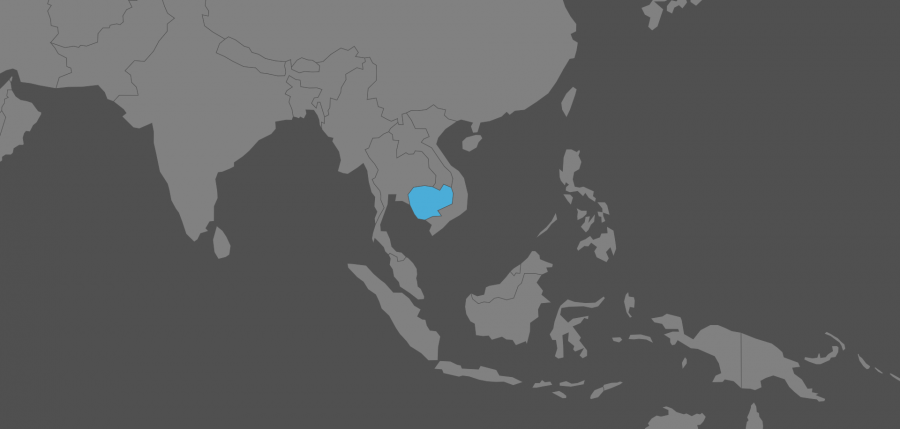
Practical information
Tourist Visa: So far I’ve been twice to Cambodia. First time I got my visa in Bangkok and I paid $20 for 1 month, without any problem. Unfortunately, upon arrival to Cambodia I had to pay a few dollars bribe to the immigration officials. The second time I got my visa in London for only £14, also for one month. Although visa on arrival is very popular I recommend buying it before to avoid paying bribes.
Safety: safe country. Watch your bags just in case.
Getting around the country: by the standards of a developing country, transport is quite good, but I’ve travelled a few roads with a meter deep holes, nearly causing “sea sickness”. Condition of the roads between major cities is good. I also recommend river transport during monsoon. In 2012 the state of the roads was much better and upon my arrival Cambodians proudly told me about the recent “luxury”.
Prices: (for 2012 when £1 = 7KHR) I don`t advise you to pay more for a room than $5, although you can pay less and much more. They are generally in a very good condition. Transport and food are also extremely cheap. For those on low budgets I recommend to organize all trips on their own. Cambodia is very cheap even for the poorest Europeans. For $20 a day you can feel comfortably.
Climate: monsoon with high humidity and two seasons: dry and rainy. The dry season lasts from November to April and the average air temperature is 20oC-25oC. The rainy season lasts from May to October and the temperature at this time is over 30oC. You will need a hat to protect yourself against the sun.



